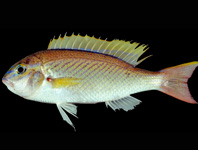Abstract
The Noctuidae genus Mudaria Moore, 1893, as treated in this paper, comprises 20 species distributed in the Oriental region from India to Fiji, with its centre of diversity in the Sundaland. The biology of the genus is unusual, in that the larvae bore into the fruits or pods of plants in family Bombacaceae (Holloway 1989) and Sterculiaceae (Robinson et al. 2001). Larvae of M. cornifrons have been recorded in the pods of silk-cotton tree (Bombax), in pods of kapok (Ceiba pentandra), in durian fruits (Durio) (Roepke 1916, Holloway 1989, Tan & Tan 1991 [1992], Kuroko & Lewvanich 1993) and in Pterospermum fruit (Robinson et al. 2001). On Bombax mature larvae emerge from fallen pods and tunnel into the soil to pupate in an earthen cocoon lined with silk (Holloway, 1989). Adult emergence is timed to coincide with the flowering of the host.
References
deWaard, J.R., Ivanova, N.V., Hajibabaei, M. & Hebert, P.D.N. (2008) Assembling DNA Barcodes: Analytical Protocols. In: Cristofre, M. (Ed.), Methods in Molecular Biology: Environmental Genetics. Humana Press Inc., Totowa, pp. 275–293.
https://doi.org/10.1007/978-1-59745-548-0_15Hardwick, D.F. (1950) Preparation of slide mounts of Lepidopterous genitalia. Canadian Entomologist, 82, 231–235.
https://doi.org/10.4039/Ent82231-11Holloway, J.D. (1982) Taxonomic appendix. In: Barlow, H.S. (Ed.), An introduction to the moths of South East Asia. The Malayan Nature Society, Kuala Lumpur, pp. 174–275.
Holloway, J.D. (1989) The moths of Borneo. Part 12. Family Noctuidae, trifine subfamilies: Noctuidae, Heliothinae, Hadeniae, Acronictinae, Amphipyrinae, Agaristinae. The Malayan Nature Society, Kuala Lumpur, 226 pp.
Holloway, J.D. (2009) The Moths of Borneo. Vol. 13. Noctuidae: Pantheinae, Bagisarinae, Acontiinae, Aediinae, Eustrotiinae, Bryophilinae, Araeopteroninae, Aventiinae, Eublemminae and further miscellaneous genera. The Malayan Nature Society, Kuala Lumpur, 240 pp.
Holloway, J.D. (2011) The moths of Borneo. Part 2. Phaudidae, Himantopteridae, Zygaenidae. Complete checklist. Historical appendix. Index. The Malayan Nature Society, Kuala Lumpur, 548 pp.
Kononenko, V. & Pinratana, A. (2013) Moths of Thailand. Vol. 3. Part 2. Noctuoidea. Brothers of St. Gabriel in Thailand, Bankok, 624 pp.
Kuroko, H. & Lewvanich, A. (1993) Lepidopterous pests of tropical fruit trees in Thailand. Japan International Corporation Agency, Tokyo, 132 pp.
Leong, T.M. (2010) Final instar caterpillar and metamorphosis of Chasmina candida (Walker, 1865) from Singapore (Lepidoptera: Noctuidae: Bagisarinae). Nature in Singapore, 3, 211–215.
Moore, F.Z.S. (1893) The silk cotton pod moth. Indian Museum Notes, 3 (1) 68–70.
Ratnasingham, S. & Hebert, P.D.N. (2007) BOLD: The Barcode of Life Data System (www.barcodinglife.org). Molecular Ecology Notes, 7, 355–364.
https://doi.org/10.1111/j.1471-8286.2006.01678.x.Robinson, G.S., Ackery, P.R., Kitching, I.J., Beccaloni, G.W. & Hernández, L.M. (2001) Hostplants of the moth and butterfly caterpillars of the Oriental Region. Southdene & The Natural History Museum, Kuala Lumpur, 744 pp.
Sibatani, A., Masami, O., Yoshio, O. & Hiromu, O. (1954) Male genitalia of Lepidoptera. Morphology and Nomenclature. I. Divisions of the valvae in Rhopalocera, Phalaenidae (=Noctuidae) and Geometridae. Annals of the Entomological Society of America, 47, 93–106.
Tan, C.L. & Tan, M.W. (1991 [1992]) Two species of Mudaria infesting durians in Peninsular Malaysia. MAPPS Newsletter, 15, 51.

